Starter Guide: Air Quality Sensors and Management for Smart Cities
This article is an introduction into the topics of air quality sensors and air quality management for smart cities and is intended to be smart city managers’ first point of contact with this topic. In the following, we will provide a basic overview of this topic. Please visit our air quality knowledge database for more information on specific topics.
Air pollution – and thereby air quality – is one of the most important topics of our time. According to the World Health Organization WHO, 9 out of 10 people globally live in areas with too high levels of air pollution. At the same time, some of the most well-known air pollutants like ozone and particulate matter are also climate pollutants, and are thereby relevant in the climate protection efforts of governments around the world. Metropolises have already been managing their air quality for decades, as air pollution has a direct influence on the health and quality of life of their citizens, as is also influenced by changes in urban planning and management, e.g. in traffic and mobility. In the context of smart city projects, new technologies like internet of things (IoT)-based air quality sensors and artificial intelligence come with new chances and opportunities that also allow small and medium-sized cities to finally start working on air quality and clean air action.
Goals of air quality monitoring and use cases of air quality datasets
Most important for planning an air quality monitoring and management project is the question, why it is planned to collect air quality data. Based on the answer to this question you may have different requirements regarding measurement technology and accuracy, the density of the monitoring network and sensors, as well as other technical requirements. An air quality monitoring project could have the following goals:
- Legally mandated air quality monitoring: According to national regulation, different governmental entities are usually required to operate and maintain a minimum number of air quality monitoring stations to ensure adherence to national air quality standards. That number could for instance be based on land area and population density. Beyond this monitoring efforts, cities and other institutions are usually free to run their own air quality monitoring and management efforts.
- Citizen information: A municipality might want to provide their citizens with general information about the local air quality, e.g. in the city center. Collected datasets could be shared publicly via open data portals, air quality citizen portals, smart city apps or other data distribution applications. It is usually recommended to provide contextualized data to the public, i.e. air quality data that has been interpreted on the basis of an air quality index. Providing air quality data to the public is often a first step in smart city projects and can help to show the success and public benefit of smart city implementations to the public.
- Active air quality management: If the collected datasets should be the foundation to actively manage and improve the air quality of a city, they are used to plan and implement clean air actions. An ongoing monitoring campaign then helps to quantify and evaluate successes and optimize the resources spent on clean air action.
- Impact analysis of changes in the municipality: Sometimes independent of active air quality management, it can be helpful to monitoring the impact of the efforts of city planning and urban management efforts. If, for example, the rules and regulations concerning parking in a part of the municipality change, e.g. raising prices for parking tickets, air quality could improve due to the decreased attractiveness of private transportation to move around, but it could also decrease due to citizens looking longer for surrounding cheaper or free parking spots. Current data about these changes in air quality can help to mitigate negative effects of these changes.
- Foundation for city planning: Air quality datasets can be used as a foundation for planning processes in different departments of the city, beyond just the environmental department. If such data is shared within the public administration, the whole city management team profits.
- Further smart city applications: Sometimes it also makes sense to leverage air quality data within other smart city applications, e.g. an intelligent adaptive traffic management system.

The most important air quality parameters for smart city
The most important air quality parameters for a municipality usually are:
- Carbon monoxide (CO): from traffic, industry and other combustion processes like heating systems
- Nitrogen monoxide and dioxide / nitric oxides (NO and NO2, also combined as NOx): from traffic, industry and other combustion processes like heating systems
- Ozone (O3): as a secondary product from chemical reactions of other air pollutants like carbon monoxide and nitric oxides
- Particulate matter (PM10 and PM2.5): from traffic, industry and other combustion processes like heating systems, also as abrasion from tires, train tracks and other sources
Air quality measurements about these parameters are usually collected as concentration counts, e.g. in µg/m3 or in ppm / ppb (parts per million / parts per billion). Real time measurements are usually fluctuate a lot, hence analyzing the data is usually done on the basis of mean values, e.g. 1-hour-means, 8-hour-means or day means. The collected data can be evaluated based on an air quality index. This index shows, how good air quality was during a specific time frame. Based on scientific research, there are different thresholds for different time frames, as a brief exposure to an air pollutant at a higher concentration may be less hazardeous and long-time exposure to the same pollutant at a lower concentration.
There are additional air quality parameters that may be relevant in specific scenarios. It is therefore helpful to gather information about potential local sources of air pollution, such as industry, ports and airports, and highways.
The best air quality measurement technologies for smart cities
Air quality data can be collected using different technologies and solutions:
- Traditional automated air quality monitoring stations: Automated monitoring stations are based on very accurate measurement instrumentations. Usually, the national air quality monitoring effort is based on such devices. However, their technology is too expensive for (large-scale) use by municipalities themselves, and require too much manual work and maintenance. Data is usually only available with a long time delay and after extensive manual efforts, such as transporting samples into laboratories for further analysis.
- Passive collectors: Passive collectors are one-time use test tubes that help to measure the average concentration of a specific air pollutant. They can be placed in any location for a pre-determined time (e.g. 3 weeks). Chemicals within the test tube react with the specific air pollutant. After an analysis in a laboratory, a single mean concentration value is calculated for the timeframe.
- Citizen science sensors: Citizens have started to deploy their own air quality monitoring devices. There are several open source communities that develop such low-cost sensors and that operate web portals collecting such data from around the world. These sensors usually struggle with accuracy and data quality due to their very simple and inexpensive measurement technology.
- Calibrated air quality sensors: Different technology vendors have been developing calibrated air quality sensors for the use in smart cities within the last 5-10 years. Collected datasets are usually quality controlled and calibrated by smart algorithms. As the provided data went through a quality assurance process, this technology is particularly suited for the use in smart city projects. Additionally, there are significant cost savings compared to traditional automated monitoring stations. To ensure a continuously high measurement quality, the sensors usually need to be replaced or maintained every 2-3 years. This is why a rental or as-a-service model usually makes sense for most municipalities.

Selecting the most suitable air quality monitoring locations
Voluntary air quality measurements conducted by a municipality are usually not subject to national regulation on air quality monitoring. However, it can still make sense to adhere to parts of it, e.g. when selecting measurement locations. The regulation usually separates different types of monitoring locations, such as traffic, industry and background sites, and provides guidance around topics like measurement heigh and distance to roads and crossings. We look into location criteria in Germany in a separate article. Based on the intended goal of the monitoring campaign (or the intended use of the data), representative locations should be selected. The measurement density depends on the measurement goal as well. An experienced partner can help a municipality to select locations and design a monitoring network based on experiences from previous projects.
In some projects it can also make sense, to include citizens in the selection of measurement sites. In several projects, Breeze Technologies has worked with citizens as so-called “sensor hosts”: Some sensors were deployed in private front yards or on balconies belonging to local community members. This can support the establishment of an air quality monitoring network if the local administration does not have sufficient own installation locations, or to support the engagement of citizens in the city’s clean air action efforts. However: When selecting monitring locations and installing sensors with citizens, quality control is of the utmost importance; for example, households of smokers are usually unsuitable to deploy sensors at, as the cigarette smoke would falsify measurement results.
Selecting the best solution for air quality monitoring and management for your smart city
When selecting which solution to go with to implement an air quality monitoring and management project in your city, you should look at several parameters:
- Appropriate features: Do the sensors provided all relevant measurement parameters based on your municipality’s requirements? Does the vendor also provide software for visualization and data analysis? If the data is intended to be shared with the public: Is there tools available for that as well?
- Scope of service: Do you require support with the selection of monitoring locations, the sensor installation or checking that the sensors have been installed correctly? Do you already have experience with air quality data analysis, or do you need help with that? How aboout the ongoing calibration and maintenance of the sensors?
- Operating model: Do you want to buy the sensors, or is it more important to receive quality-controlled data from a qualified monitoring network operator? In the latter scenario, rental or “as-a-service” models are usually the better choice for a municipality.
- Future project expandability: Is the system modular and expandable, if additional monitoring parameters should be collected? Is there a programming interface (API) available and can the data be downloaded to avoid a “vendor lock in”?
- Cost: In the end, pricing also plays a role – particularly if you want to roll our a quick pilot project. Based on our experiences, pilot projects with a limited scope can usually be implemented below tender levels and can therefore be started within just a few weeks.
Next steps for your air quality monitoring and management project
We hope that this article was helpful to get a basic understanding of air quality monitoring and management projects in the context of smart cities. Additional information to the individual topics of this article is available in our knowledge database. However, if you think there was general information missing from this article, do not hesitate to reach out and let us know – we are looking forward to your feedback! If you are planning an air quality-related project in your city or municipality, we are also looking forward to hearing from you. We are at your disposal as a competent contact partner and are also happy to advise you on project planning and design.



